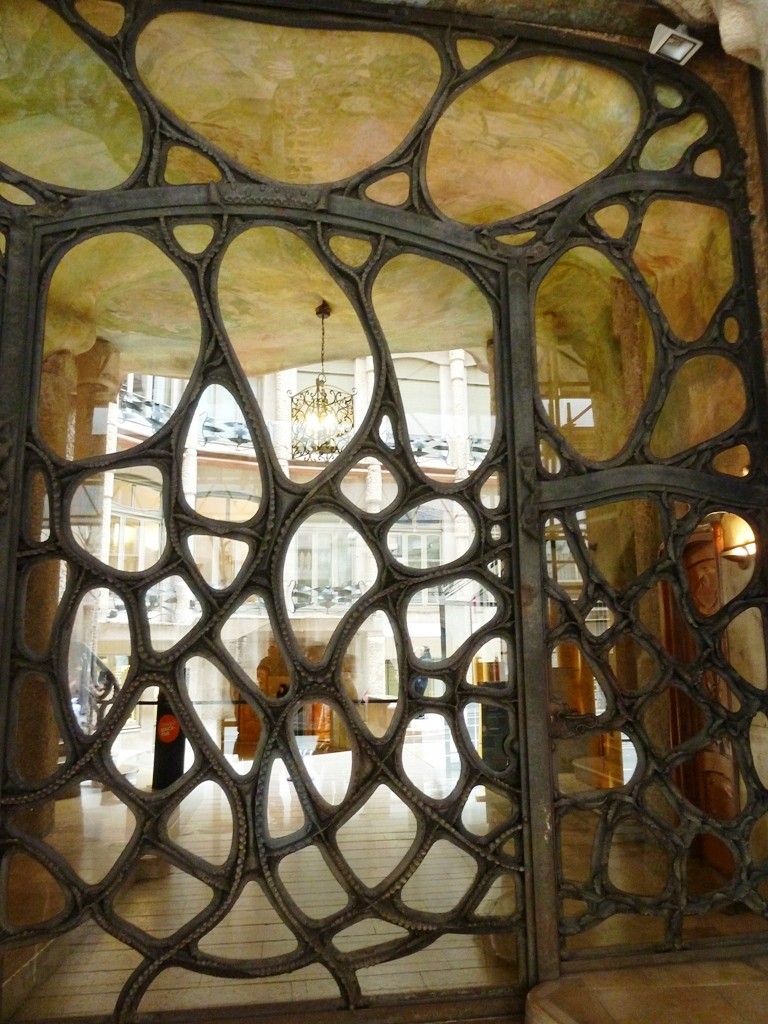Approaching the crossroads with Carrer de Provença, though, your attention will be inevitably caught and your curiosity aroused either by a swarm of people standing (or queuing) in front of an imposing building, or by the building itself. And indeed, Casa Milà, commonly known as La Pedrera, is not exactly that kind of building which normally goes unnoticed. A quick look at the palace will reveal the reason why this modernist building is called La Pedrera (which literally means "stone pit"): apparently a petrified wave, it is indeed completely made of a stone whose colour varies from white to grayish depending on the different hues and the condition of the light.

It was a wealthy businessman, Pere Milà, who commissioned the building to Gaudì at the beginning of the 20th century. The great architect, who had already realised several extraordinary palaces in the Eixample district, aimed at overcoming his own amazing creations. As a consequence, he conceived this bizarre house, which was built between 1906 and 1912 and was the last of his public creations. The palace is literally huge, including not only the flat intended to be the dwelling of the Milà family, but also some smaller flats and, above all, a terraced roof which is probably the most incredible of its elements. And it was exactly due to the spark of a controversy about the roof that Gaudì finally gave up the construction, leaving the project partially unfinished. It was its intention, indeed, to place on the roof a large statue of the Virgin, and when the Milà family denied him the permission, he reacted with great disdain.

Anyway, it is beyond discussion that the building is one of the masterpiece of the Modernist period. Admiring it from distance, the unique structure based on a series of layers of stone, supported by columns and decorated by small wrought iron balconies. The sinuous lines characterising the design are typical of the style of the great architect, as the decorations of the balcony and the columns, clearly inspired to natural elements. It is really worth taking a close look to the entrance side, located along Carrer de Provença: provided the pavement is not crowded by the visitors patiently standing in a queue to get in, you will be able to admire the interesting structure of the columns, the splendid entrance gate, once again made of wrought iron, and to take a glimpse of the wonderful decorations of the inside.

Unfortunately, this is all you can get for free at La Pedrera: a visit to the inside part and the roof, indeed, will cost you about 16 Euros, with no free entrance days. I must admit that I was among the ones put off by the entrance fee, so at the moment I have contented myself to the outer contemplation I have just described. It is a real pity, because the inside part, namely the ancient dwelling of the Milà family, which has been preserved almost untouched, must be a real pleasure for the eyes. As I have previously said, though, the most spectacular element is probably the roof, consisting in a series of colourful pinnacles and chimneys, both enchanting and unsettling at the same time as they resemble a threatening army of medieval knights.

If you are planning to buy a ticket to visit the roof, it may be a good idea to take into consideration the option called La Pedrera Secreta, consisting in a night time tour for the building, which will make the setting even more charming. As an alternative, it is possible to catch sight of the roof from distance, though of course it is not the same thing at all. A final possibility to get the most from your trip to Casa Milà is paying a visit to the bar housed at the ground floor of the building, called El Café de La Pedrera: you will have to content yourself with a small part of the beauties of the palace, but on the other hand there are probably few more fascinating places where you could be sitting to have a drink!
Nevertheless, I must admit that, as far as I am concerned, Casa Battlò is still by far the most amazing of Gaudì's creations in the Eixample: whether it is due to the fact that it is possible to admire its incredible beauty from the outside, or because the desertion of the final part of the project left Casa Milà with a sense of incompleteness, I cannot say. But when dealing with the extraordinary masterpieces found in The Eixample, my mind will undoubtedly conjure up the spectacular facade of the "Casa del Drac".
